Today’s post is something of a departure from my usual flowers and was inspired by an Aga demonstration that I attended last Sunday.
Let me start by introducing the Aga to those who do not own one – an Aga is not just a cooker – an Aga is a way of life!
When I was younger, living and working in London, I had never heard of an Aga. My dream kitchen in those days would have included a shiny stainless steel and glass electric oven by Smeg, with a large gas hob for instant temperature control. When we moved to Suffolk to a house with a real country kitchen, that lump of metal the previous owners called the Aga was first on my list of things that I needed to change.
How wrong I was – on our very first weekend in that house I remember my five year old son sitting on the kitchen floor with our new dog leaning against the Aga and saying that whatever else changed, please could we always keep the Aga. How right he was – now I cannot imagine life without one.
An Aga really is the heart of a country home and works in a completely different way to a conventional oven. On 24/7 the whole metal box is always warm – it throws out its gentle heat keeping the kitchen warm and welcoming. You can dry your laundry around it, iron sheets on it, boil a kettle, make toast, open jam jars, dry the dog and warm your wellies – oh and it cooks lovely food as well!
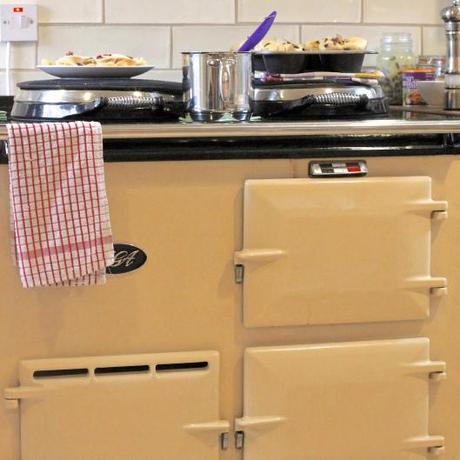
On Sunday I spent a few hours in the company of Mandy Gooden, an AGA demonstrator who whipped up a Christmas lunch for a large group of ladies in under 2 hours whilst she talked to us. As she cooked she reminded us of all the tips and tricks that make cooking living with an Aga such a treat, as well as helping us to plan our Christmas menus.

You soon learn when you acquire an Aga (whether bought shiny and new or inherited with a new home), that an Aga requires a lot of accessories. Not only does it have special pans, baking sheets, cold shelves and other oddities – it also has its own cookbooks, tea towels, aprons and oven gloves – all sold in lovely cosy Aga shops such as the one we were in on Sunday.
Although these accessories are expensive, they do last. My first Aga came with our new house and dated back to the 1960′s. The set of 3 casserole pans that were left with it must be at least as old, but I would not exchange them for new shiny pans – they cook beautifully and nothing sticks to them! My baking sheets are also from that original Aga. In our most recent move we inherited our second AGA which is about 12 years old, but looks exactly the same as the 1960 model. All the shelves, baking sheets, roasting tins etc from my first Aga fit this newer model, so there was no need to buy any new pans.
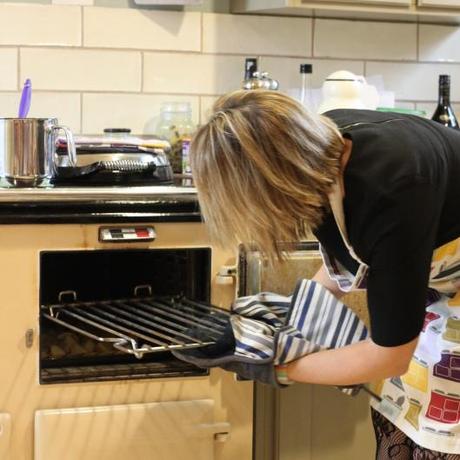
First up on our cookery demonstration was the turkey. Christmas can be a nightmare for new Aga owners. As I have said the Aga does not work like a conventional oven. There is no temperature dial – it is essentially a large cast iron box that is heated to a set temperature all the time. If the box cools down you have no way of quickly heating it up again. For the newbie Aga owner, cooking as you would on a conventional oven, you will invariably waste the heat in the Aga, which will run out of steam just before the roast potatoes have browned – I know because I have been there. Over the years I have learnt the 80/20 rule – 80% of cooking in an Aga must be done in the ovens, so that you lift the lids as little as possible. Roasting, frying, grilling and baking can all be done in the ovens using the right pans.
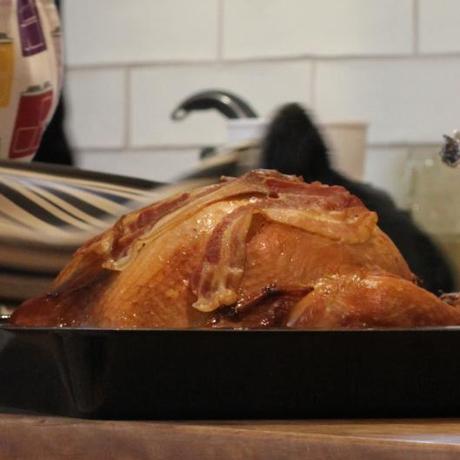
As a result an Aga cook very rarely uses the hot plates – almost all cooking is done in the spacious ovens. It also pays to make use of slow cooking whenever possible. The Aga Simmering Oven stays at a temperature perfect for making casseroles, stews and soups as well as slow roasting joints for Sunday lunch.
Aga cooks do not get up early on Christmas Day to put the turkey on – the turkey is prepared on Christmas Eve and after a quick browning in the Roasting Oven spends the night slow cooking in the Simmering Oven. The turkey comes out about 12 hours later beautifully moist and perfectly cooked, to be wrapped in large sheets of foil and covered with a thick towel ready for carving at a later hour.
With the turkey out of the way, it is on to the roast potatoes.
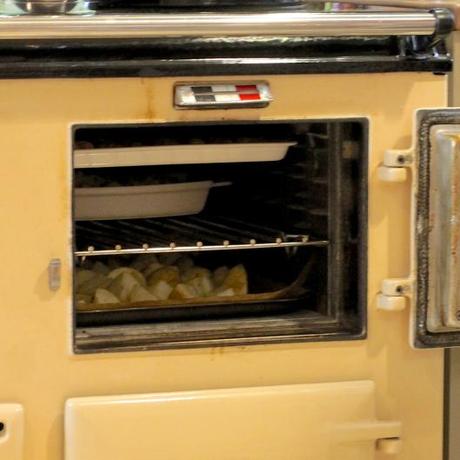
It is a fact that the Aga makes the best roast potatoes in the world (in fact probably the best food too).
After parboiling on the boiling plate the potatoes are rolled in fat (Mandy used goose fat) and started off on the floor of the roasting oven to cook the underside. I also put pies, quiches and tarts straight onto the oven floor – there is no need to blind bake pastry with an Aga. Remember that there are no elements in the oven – just a gentle even heat from the metal sides. The potatoes can later be moved higher up (heat rises so the top of the oven is always warmer) to brown. Whist the potatoes were cooking Mandy added parboiled carrots and parsnips to an Aga gratin dish and covered them with breadcrumbs. These baked in the Roasting Oven whilst the potatoes were cooking.
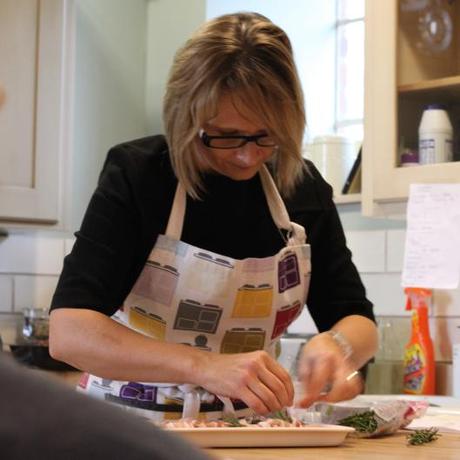
With the potatoes taken care of, Mandy prepared the pigs in blankets (sausages wrapped in pancetta). Here she used a dish I have not seen before – a white enamel serving dish that fits the shelves of the AGA. This is a lovely way to prepare a dish, which can go straight to the table and it is now on my wish list!
If you are not familiar with an Aga one of its beauties is that all the roasting tins and baking sheets fit the oven runners so it is possible to get far more into an AGA than if you were using conventional shelves. Also all cooking smells are extracted through a vent straight outside, so there is no cross contamination of food – it is absolutely fine to bake a cake whilst cooking fish in the oven.
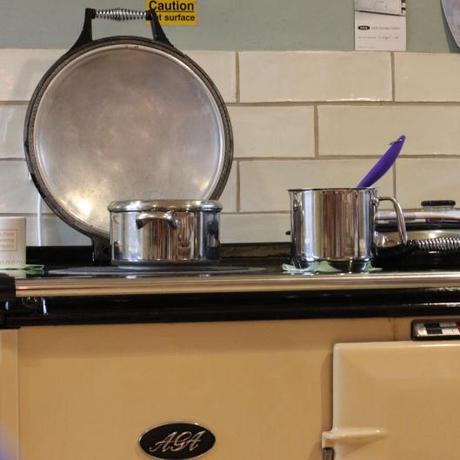
Mandy then moved onto the vegetables. The main advice I can give anyone new to an AGA is to use the top plates as little as possible – they are the biggest source of heat loss. The whole top of an Aga, however, is always warm so make the most of that heat by melting butter and chocolate in bowls on the surface, keeping pans warm containing sauces or vegetables and storing your cup of tea there (it keeps warm for ages!). Here Mandy was bringing the brussel sprouts to the boil – they were simmered for 2 minutes, drained and then left in the pan at the back of the Aga to finish cooking. This method effectively steams vegetables without filling the kitchen with steam and works best for all green vegetables.
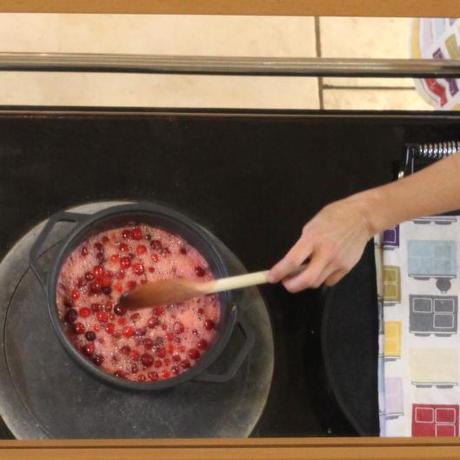
Finally she quickly made the cranberry sauce – fresh cranberries, sugar, port and orange juice. She brought all the ingredients to the boil for a few minutes and then set the pan on the back of the oven until needed.
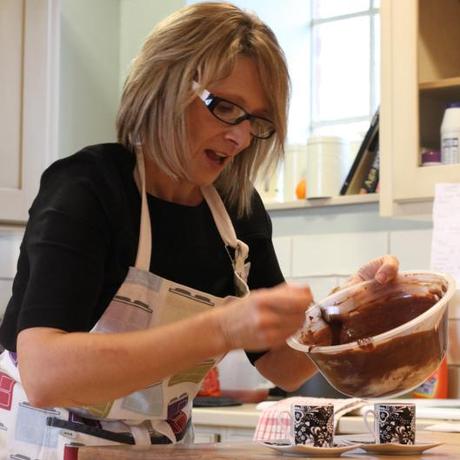
Mandy finished by making the dessert. The Christmas Pudding had been placed in its plastic container in the simmering oven to warm through – no need to steam it again. Chocolate and marshmallows had been standing in a plastic bowl on the back of the Aga and the melted mixture was stirred into whipped cream and then transferred to expresso cups for a fancy alternative to Christmas Pudding. The custard had been made earlier and was keeping warm in the simmering oven with the pudding.
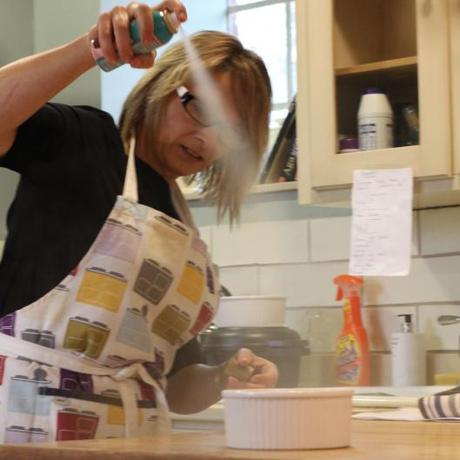
A quick spray with edible glitter finished off both desserts with a touch of Christmas bling!
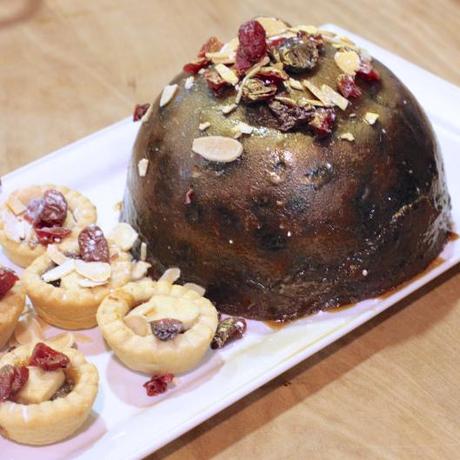
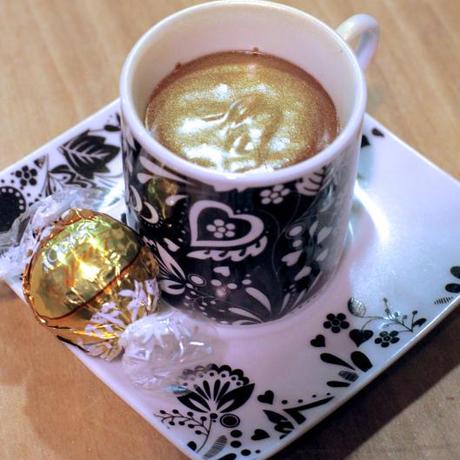
After all that cooking we sat down to eat Mandy’s lovely food and share stories about our own Aga experiences.
I have to say a big thank you to Mandy for such a well executed and informative demonstration – I certainly would not like to have an audience whilst I cook Christmas dinner! You can catch up with Mandy on her FaceBook page.
I am very interested to know if any of my readers are Aga owners, or whether some of you may never have heard of an Aga before. If you are an Aga owner and have any tips I did not mention for cooking Christmas dinner, please do leave a comment.
I am off tomorrow for an exciting couple of days in London, taking on the foodie delights of Borough Market and visiting the Covent Garden Flower Market – both are new experiences for me, so I am looking forward to taking lots of photos and sharing my days out with you next week.
